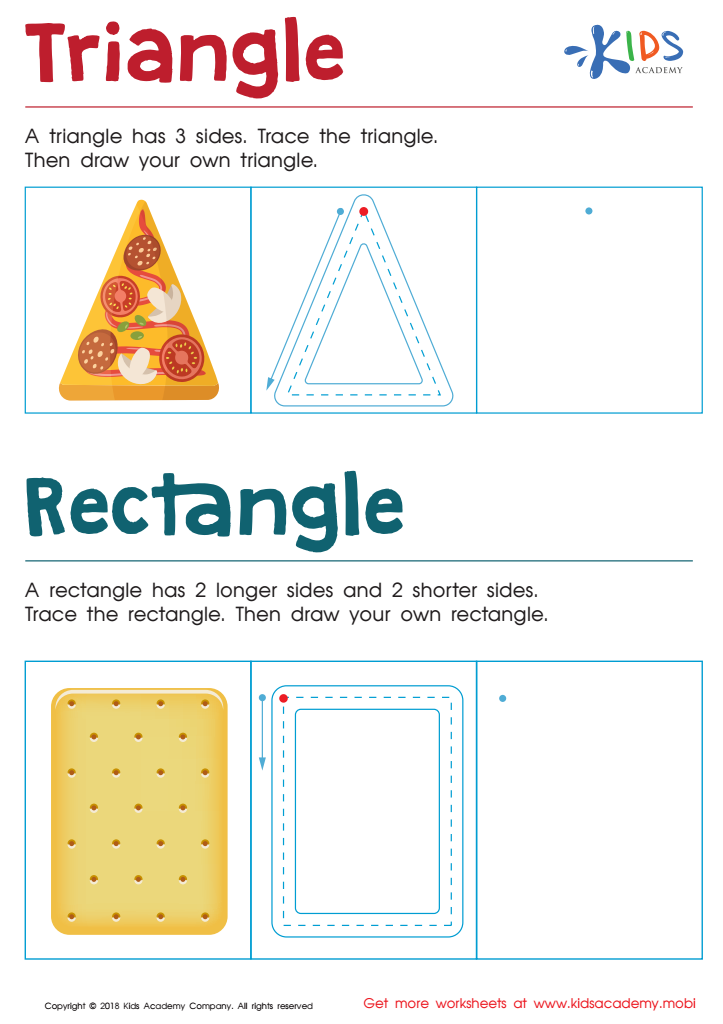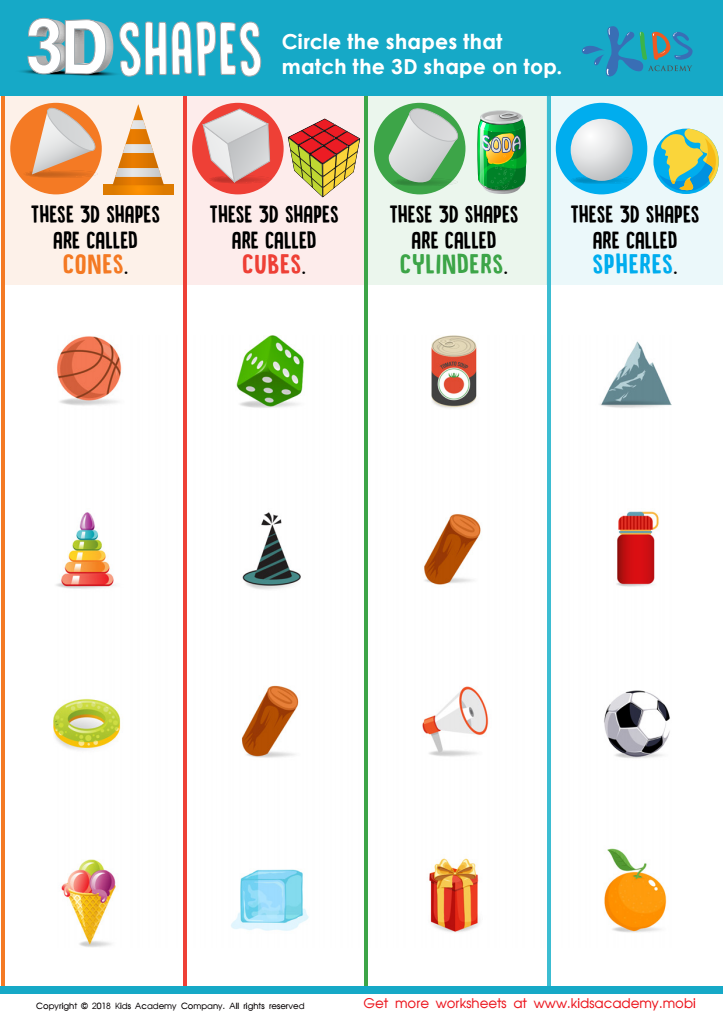Differentiating shapes Normal Worksheets for Ages 4-8
3 filtered results
-
From - To
Discover engaging worksheets designed to help children aged 4-8 master differentiating shapes! Our fun and colorful activities inspire young learners to identify, compare, and contrast various shapes, honing essential skills in a captivating and interactive manner. Each worksheet provides age-appropriate challenges that gradually build confidence and proficiency in recognizing geometric figures. Perfect for homeschooling or supplementing classroom learning, these resources cater to children's developmental stages to foster a strong foundation in shape differentiation. Unlock your child's potential with our expertly crafted worksheets, ensuring they enjoy and excel in their early educational journey.


Triangle Rectangle Worksheet


Plane Geometry: Sides Worksheet


3D Shapes Worksheet
Understanding and differentiating shapes is fundamental for children aged 4-8 because it builds the foundation for advanced cognitive and motor skills. Parents and teachers should care about this development for several key reasons.
Firstly, recognizing and naming shapes enhances mathematical abilities by introducing concepts of geometry, spatial reasoning, and problem-solving at an early age. These skills are crucial for future success in STEM (Science, Technology, Engineering, and Mathematics) subjects. Furthermore, learning shapes is intertwined with literacy development. Many letters and numbers resemble simple shapes, so grasping these concepts aids in early reading and writing proficiency.
Shape differentiation also contributes to a child's laterality and directional abilities. These skills are critical for activities such as reading and writing, where understanding the directionality of text and the layout of the page is essential. Fine motor skills improve when children practice drawing and cutting shapes, which is necessary for everyday tasks like writing, buttoning a shirt, or using utensils.
Beyond academic and motor skills, identifying shapes nurtures observational and analytical skills. Recognizing patterns in everyday environments boosts critical thinking and attention to detail. Lastly, the fundamental ability to differentiate shapes increases confidence and promotes a love for learning, setting the stage for lifelong educational success. Therefore, parents and teachers play a pivotal role in fostering this foundational skill during these formative years.
 Assign to My Students
Assign to My Students



















